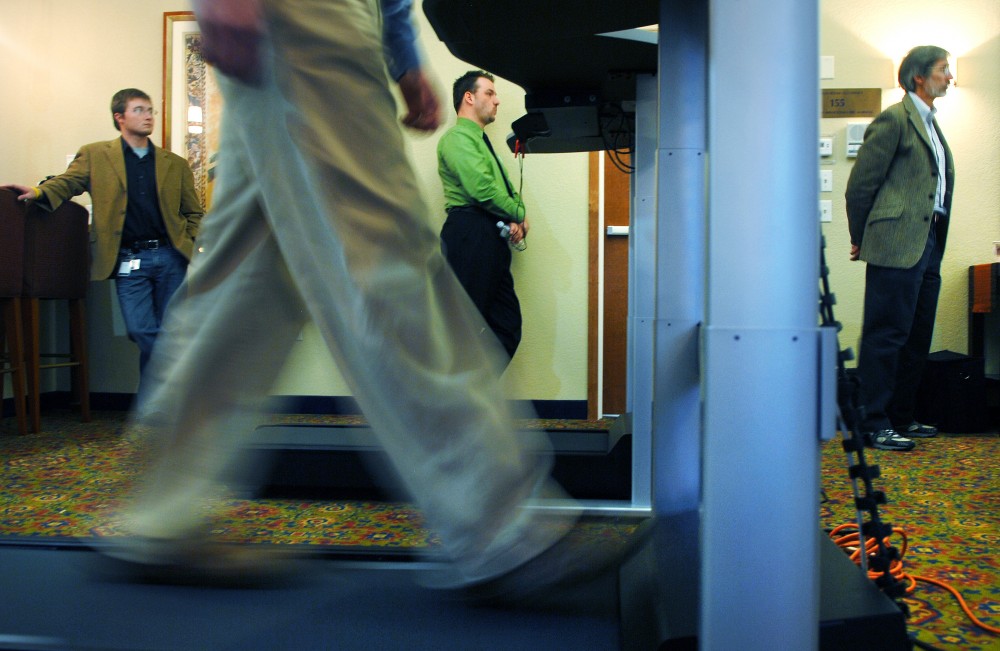A University of Minnesota researcher and Mayo Clinic doctor have been working hard to figure out ways for people to lose weight by doing a little more than fidgeting. Now their labors are finally starting to pay off. For about ten years Dr. James Levine and food science and nutrition professor Catherine Kotz have been studying nonexercise physical activity thermogenesis (NEAT) âÄî how individuals burn calories through simple movements such as walking, fidgeting or standing. The idea is, if you can burn a few extra calories each hour through simple, movements, you can lose weight without exercising or dieting, Kotz said. Their research has been an arms race against the ever-growing nationwide obesity trends. According to the Centers for Disease Control and Prevention, 25 percent of Minnesotans were obese in 2007. Levine has gained national attention for his research and has held more than 20 research grants funded by the National Institutes of Health . His findings have lead to the development of treadmill work stations, on which a person can walk at a slow pace and type on a computer at the same time. Levine and KotzâÄôs research has also paved the way for Muve, Inc. , a Mayo-affiliated company that sells devices that track calorie burning throughout the day. The company started in 2007, but just started to take off this year, CEO Tom Hudson said. The device attaches to a belt and tracks all movements âÄî not just walking âÄî and downloads data online, so users can see exactly how many calories they burn each day, down to the minute. âÄúI now know exactly how many calories I burn when I mow the lawn,âÄù Muve employee Joel Silverman said. Hudson said he thinks NEAT could be the key to a new wave of weight-loss strategies, but others are more hesitant. NEAT could help fight obesity, but there is more work to be done before it can be used as a legitimate weight loss technique, said Charles Billington , medical director for the University of Minnesota Obesity Center. âÄúI share their hope that this could be the next big thing, but I do think we need additional research,âÄù Billington said. There needs to be more data proving that individuals can burn enough calories through NEAT to lose weight, Billington said. There also needs to be more data on how to implement NEAT either through medication, behavioral changes or medical devices, he said. This is where Kotz comes in. She is currently working to understand how lab rats stay lean as they age through NEAT. Like humans, itâÄôs common for rats to gain weight as they age, Kotz said. The cause for some individuals âÄî rats or humans âÄî moving more than others comes from the way an individualâÄôs brain functions, Kotz said. Kotz said her next step in the research will be to figure out exactly what function in the brain causes individuals to fidget more. Once this is discovered, it could be possible for medication to be developed which would make people move more, Kotz said. While Kotz would like to see treatments improve, she said she was glad to see Muve progress. âÄúI think most people would like to be more physically active, but theyâÄôre stuck at a desk for eight hours a day,âÄù Kotz said. âÄúThis is a way of doing activity that is relatively pain free.âÄù











